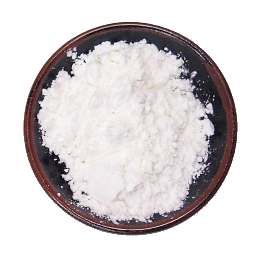Description
Corn starch, or cornflour, is the starch of the maize grain,
commonly known as corn. It is also grown from the endosperm, or
white heart, of the corn kernel. It has a distinctive appearance
and feel when mixed raw with water or milk, giving easily to gentle
pressure but resisting sudden pressure (see Non-Newtonian fluid).
It is usually included as an anti-caking agent in powdered sugar
(*0X or confectioner\'s sugar). For this reason, recipes calling
for powdered sugar often call for at least light cooking to remove
the raw cornstarch taste.
The composition of cornstarch varies depending upon the feedstock,
but it may be considered to be approximately *5% amylose and *5%
amylopectin.
Cornstarch is often used as a binder in puddings and similar foods.
Most of the packaged pudding mixes available in grocery stores
include cornstarch. Cornstarch puddings can be made at home easily
by using a double boiler. The most basic such pudding is made from
milk, sugar, cornstarch and a flavoring agent.
Cornstarch can be used as a thickener in many recipes. Because
cornstarch tends to form lumps when mixed with warm or hot water,
it is best dissolved in cold water. It is also found in many
gluten-free recipes.
Cornstarch also has many uses in the manufacturing of
environmentally friendly products. For example, in ***4, the
Japanese company Pioneer announced a biodegradable Blu-Ray disc
made out of cornstarch. The use for the plastic is vast, as it is a
renewable plastic that has the benefits of being biodegradable,
used in injection molding, in extruders, and other common milling
processes. It is also used as a medium to heavy starch for
clothing.
Cornstarch has been used as a replacement for talc in baby powder.
